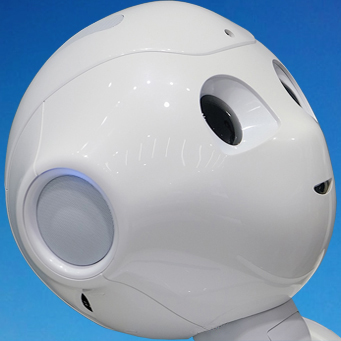
Robotic Process automation is the process of introducing AI and robots to take over or enhance jobs which are typically done by a human. Salesforce has found that 95% of IT leaders are prioritizing workflow automation, with 70% seeing the equivalent of more than four hours of savings per employee each week. That’s because RPA addresses bottlenecks with workflows, data, and documentation while providing audit trails and reducing compliance expenses and risks. RPA can also boost legacy integration and record digitization and enable data-driven decisions and “path-to-cognitive” technologies, according to Technologent’s Kevin Buckley. But as RPA expands to increasingly complex domains, the technology itself grows more complicated.
RPA is the category of software that automates tasks traditionally done by a human, using software robots that follow a set of rules and interact with enterprise systems via user interfaces. These robots can complete repeatable tasks, perform system integrations, and automate transactions from task-level to enterprise-level via scheduled orchestration.
It comes as employees move through a work process they’d like to automate by taking screenshots, using drag-and-drop designers, and pulling data like window names and descriptions together into a process definition document. Most RPA platforms leverage AI to map tasks to automation opportunities and identify the most frequent patterns from the data, recording metrics from apps, including steps and execution time.
Computer vision algorithms enable RPA software to recognize and interact with on-screen fields and components like Flash and Silverlight. Drawing on AI, optical character recognition, and approximate string matching, RPA robots can “see” virtual desktop interfaces via clients like Citrix, VMWare, Microsoft RDP, and VNC.
Orchestration
Customers can view the robots’ tasks and supporting documents, take remedial actions in the event of a bottleneck, and visualize automation complexity and payback costs. Some software offers toolsets developers can use to borrow prebuilt automation activities, integrate third-party components, and share and reuse components. RPA software also typically lets customers import their own machine learning models or choose from a marketplace of prebuilt options and keep tabs on versioning. The company’s out-of-the-box models, which were trained on large datasets of documents, ostensibly learn to analyze industry-specific data from just a few hundred training examples.
For example, RPA startup Bizagi integrates with Azure Cognitive Services to automatically recognize new kinds of paper forms and extract data from them.
Benefits
Early in the pandemic, RPA companies like Automation Anywhere worked with health care centers to implement bots and automate laborious processes. For example, Olive, a Columbus-based health care automation startup, used a combination of computer vision and RPA to support COVID-19 testing operations by simplifying manual data entry. Beyond health care, Gryps, an RPA startup focused on the construction industry, is applying machine learning to organize construction project files and documents. For the Javits Convention Center in New York, Gryps’ software automatically ingested over 20,000 documents and 100,000 data points, collated them, and handed them over to the Javits team, with estimates putting the savings at hundreds of hours of staff time.
The number of industries RPA touches continues to grow, with a Deloitte report predicting the technology will achieve “near universal adoption” within the next five years.
Security challenges
The credentials enterprises grant to RPA technology are a potential access point for hackers. When dealing with hundreds to thousands of RPA robots with IDs connected to a network, each could become an attack vessel if companies fail to apply identity-centric security practices. Realizing RPA workers have identities gives IT and security teams a head start when it comes to securing RPA technology prior to its implementation. PAM systems allow enterprises to secure, control, and audit the credentials and privileges RPA technology uses without compromising the return on investment .
ROI
And Gartner estimates that by 2024, organizations can lower operational costs 30% by combining automation technologies like RPA with redesigned operational processes. “The first wave of robotic process automation brought the power of technology to users’ desktops in all industries and companies of all sizes. “Cloud-based, AI-enabled robots bringing intelligent automation to all enterprises.
